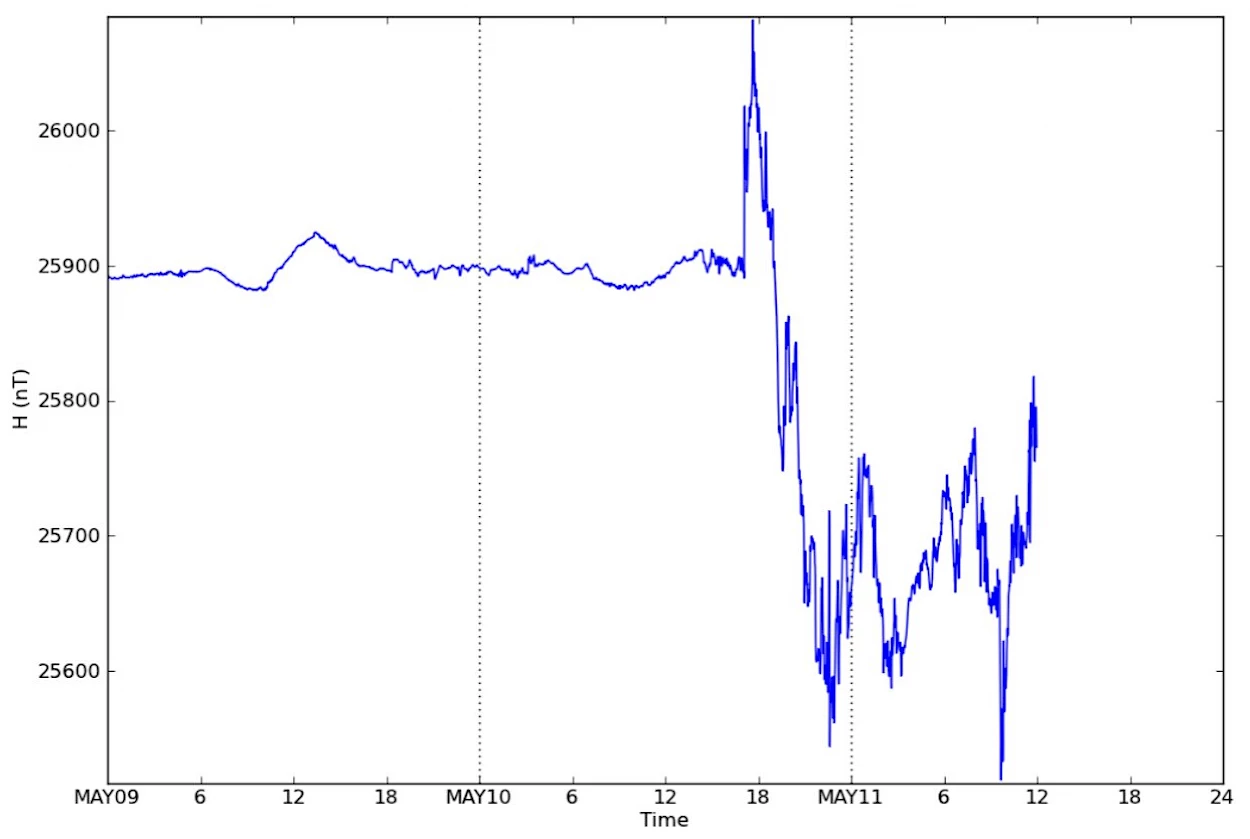Space Weather - biggest storm in 20 years!
Image of the Sun in the Calcium K1v band obtained by the Meudon spectroheliograph (Paris Observatory). This figure shows the active region AR3664 which was at the origin of the phenomena reported here.
Last week saw strong solar activity. Several X-class solar flares occurred, originating in the active region of the Sun called AR3664, a sunspot cluster 16 times the diameter of the Earth (figure 1). From this region there were five coronal matter ejections (CMEs) between May 8 and 9, which headed towards Earth.
The arrival of the first CMEs in the Earth's vicinity took place around 6 p.m. on Friday, May 10, and was felt in the sudden increase in intensity of the magnetic field observed, for example, at the Coimbra Magnetic Observatory (COI) (figure 2). This initial increase in intensity is caused by the compression of the Earth's magnetosphere, on the side facing the Sun, as a result of the collision of the CMEs. This interaction resulted in a strong disturbance of the Earth's magnetic field (geomagnetic storm), classified by the American agency NOAA as G5, on a scale of 1 to 5!
This is the kind of event that can cause various disturbances in the services provided by satellites such as communications and global positioning, in radio wave communication services, as well as disturbances in electricity transmission infrastructures and in automatic train cantonment systems that control track occupancy. These effects occur at the same time as the colorful northern and southern auroras. They are usually more intense at latitudes closer to the poles, but the night of Friday to Saturday, May 11 was special because it also offered us in Portugal auroras in various parts of the country!
The storm we are witnessing is exceptional, more intense than the Halloween storm in October 2003, which caused blackouts in Sweden and South Africa, but not as intense as the one in March 1989, which caused a major 9-hour blackout in Canada! Since the maximum of solar cycle 25 is still to come, perhaps more intense ones are on the way...? Let's keep an eye on the magnetometers and take a look at the sky over the next few nights!

